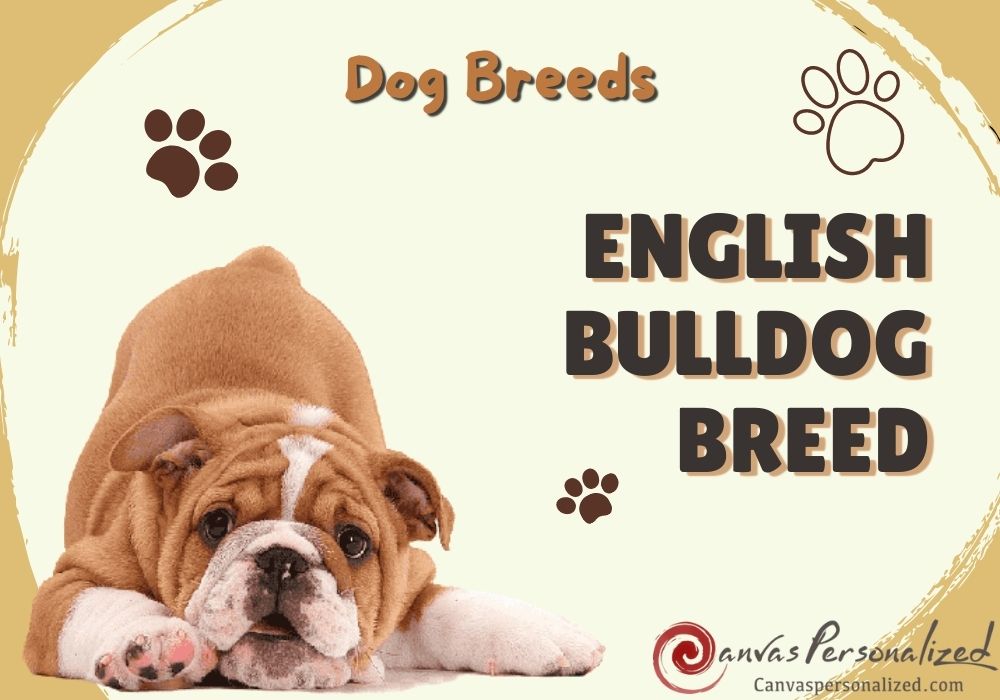The English bulldog breed is famous for being low-energy, but it also has a kind demeanor, is consistent and dependable, and gets along great with kids. Beyond that, the bulldog has changed from a fierce fighting dog to a mellow family pet.
Hence, their affectionate, outgoing personality is what most pet parents love and want to take care of. If you’re looking for a companion, consider the following important information and facts captured by the Canvas Personalized.
1. British Bulldog Traits
| Origin | England | Good With | Families, children, and other dogs and cats |
| Dog Breed Group | Companion Dogs or Non-Sporting | Temperament | Gentle; Friendly; Playful; Protective |
| Common nicknames | British Bulldog | Energy Level | Low (Lazy) |
| Height | 14-15 inches | Shedding | Normal |
| Weight | Male 50–55 lb (23–25 kg) Female 40–50 lb (18–23 kg) | Tendency to Drool | High |
| Coat | Short & Smooth | Snore | High |
| Color | Brindle; solid white, red, fawn, or yellow; piebald | Bark | Low (when necessary) |
| Life span | 8-10 years | Easy To Train | Medium |
| Other traits: | Easy to groom; prone to health issues; high potential for weight gain; apartment-friendly |
The bloody history of the purebred English bulldog explains why this breed has several names. It was bred from Roman mastiffs specifically for fighting and utilized in the brutal sport of bullbaiting. But the modern Bulldog looks almost nothing like his forebears did. It would be hard to find a dog with a sweeter, more loving nature, even though he still has a fierce aspect.
The English bulldog breed is easily recognized with a medium build and a relatively modest tail. A short muzzle accompanies the big, square head. They have robust, strong limbs and broad, muscular shoulders and chests.

Although Bulldogs are robust, they are prone to health issues, particularly respiratory and joint disorders, because of their distinctive body and head configuration. They’ll likely gain weight quickly if they don’t get enough activity.
The British bulldog may be a top dog in America, but not everyone can or should own one. For example, it can be challenging to hold it because it is pretty hefty for its size, or this breed is often passive and spends time sleeping until mealtime rolls around again. Check these crucial things before adopting one to ensure this dog breed is appropriate for your family.
BEST FOR
An English bulldog breed will thrive best in a temperate climate, and in a family, you will be around frequently to show plenty of love and care for, including kids and other pets.
1.1. Appearance
The English bulldog breed is highly cuddly to most people, thanks to its stocky build and loose, velvety skin. This breed also has distinctive underbites, squished faces, and wrinkles that give them an air of dignity and resignation. It weighs between 40 and 50 pounds and has short, powerful legs and a wide, square body.
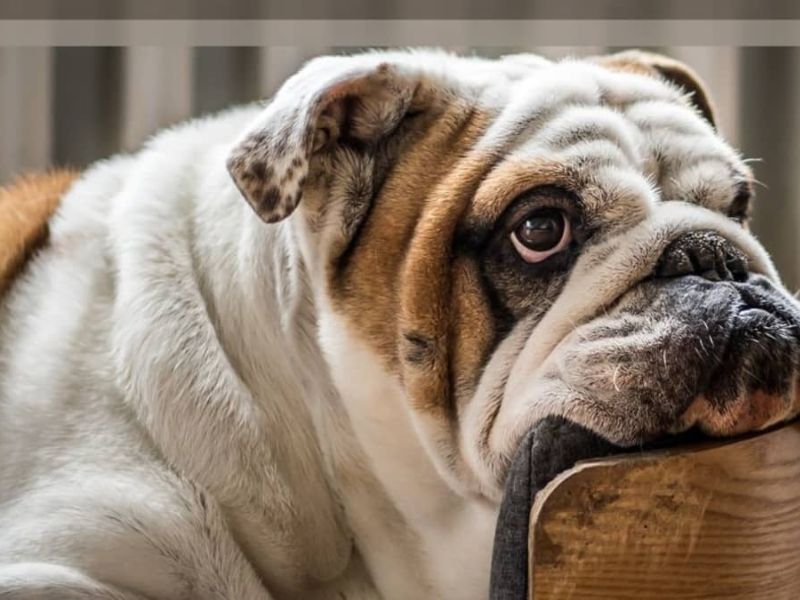
In addition, facial wrinkles, sagging skin, and a ropey nose are noticeable in a purebred English bulldog. The AKC recognizes the four coat colors red, white, fawn, and yellow. Additionally, this dog can have brindling, ticking, or black masks added to any of these patterns. The color of its eyes should always be a deep shade of brown or black.
Furthermore, the English bulldog breed tails are as small and stubby as their bodies. A “screwed” tail, which coils in on itself to make a tight, tiny bun, is a characteristic of some bulldogs. As a result, bulldogs’ trimmed rear ends and stubby tails are free to wag happily.
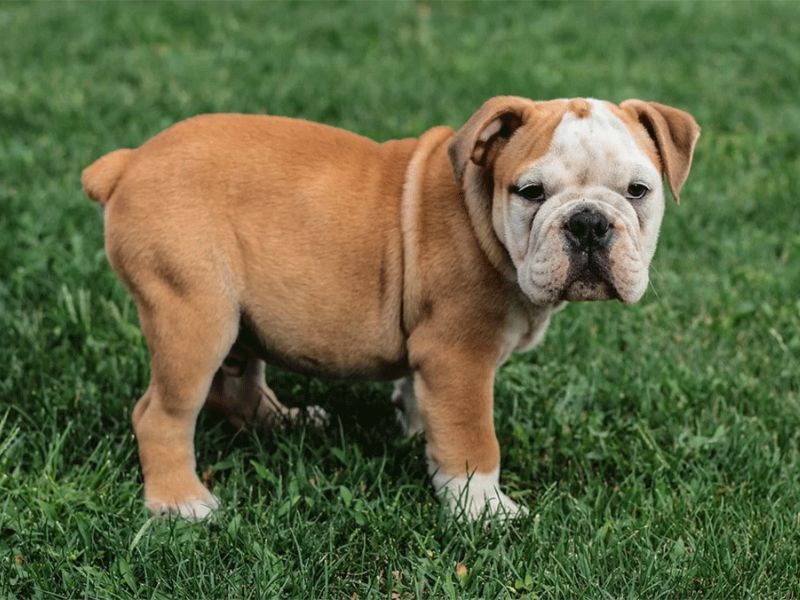
An English bulldog is easy to tell apart from a beagle or an American pitbull terrier because it is short and has long ears resembling bat wings. This makes it an excellent purebred English bulldog for guard duty, hunting, and farm work.
1.2. Temperament/Personalities
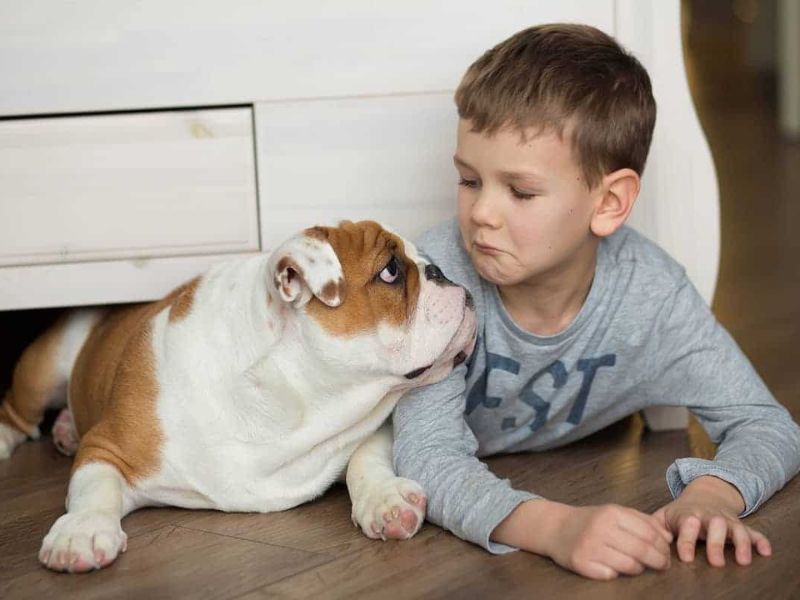
The English bulldog is known for his kind, gentle, trustworthy, and obedient temperament, making it a fantastic companion for families with children. However, they can get along fine with other household pets but might be violent toward strange canines.
The British bulldog is a perfect companion, not a warrior; he is friendly and charming, yet his reputation for bravery makes him an outstanding watchdog. Rather than being vivacious, it exudes a quiet dignity, and its attitude is generally kind but occasionally stubborn. Moreover, barking is uncommon among bulldogs, but its presence is usually enough to deter would-be burglars.
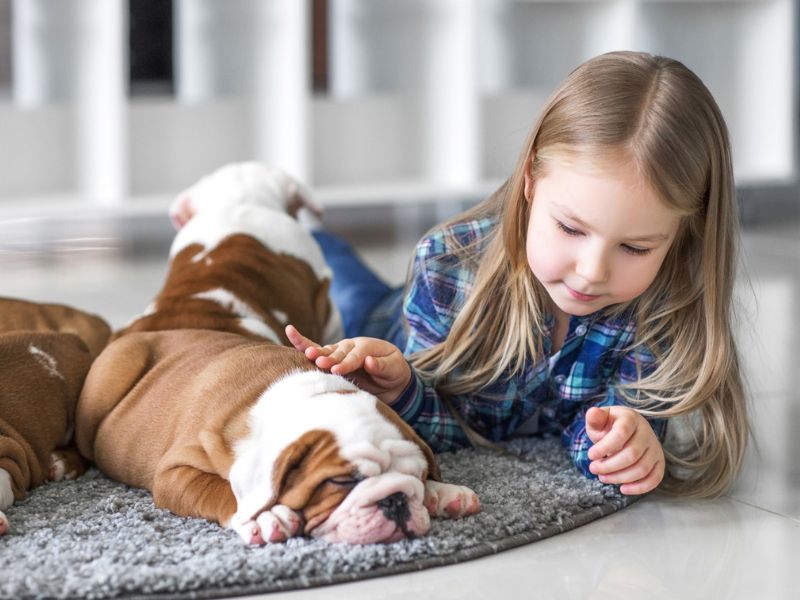
The purebred English bulldog, like all dogs, benefits significantly from early socialization, during which they are introduced to a wide variety of people, places, things, and activities. A Bulldog puppy is more likely to mature into a balanced adult dog when adequately socialized. Enroll in puppy kindergarten to get your dog off to a good start. Otherwise, they will become unruly and rude to other dogs and animals.
Hence, the more successful the British bulldog connects to new experiences, the better off it will be. Furthermore, get essential information to know what you need when caring for an English bulldog.
>>>Maybe you will be interested in exploring information about the Australian shepherd dog to be your best companion!
2. How To Take Care Of An English Bulldog?
2.1. Health Issues
Despite their endearing nature, purebred English bulldog breeds have several health problems. Short, stocky stature can lead to complications with your joints and breathing. Moreover, their tiny legs and stocky body make them susceptible to obesity and constant joint aches and pains. Furthermore, there are some essential things that you should keep in mind:
- The brachycephalic bulldog is susceptible to heat stroke and should never be left in a closed, warm environment without human supervision. Ensure your bulldog has access to cool, shaded areas, plenty of water, and enough food and drink.
- Overexcitement and rapid breathing can cause a bulldog’s tongue to protrude farther than usual and take on a bluish hue.
Regardless, dog parents should be aware of these issues so they may help the purebred English bulldog live a longer, healthier life:
2.2. British Bulldog Care
The British Bulldog can maintain his best appearance with a 10-minute, twice-weekly brushing with a soft brush since a bulldog’s coat is so short and delicate. Brushing reduces the amount of hair on your belongings, so using a rubber curry brush or some helpful dog grooming tools might be helpful at times of higher shedding.
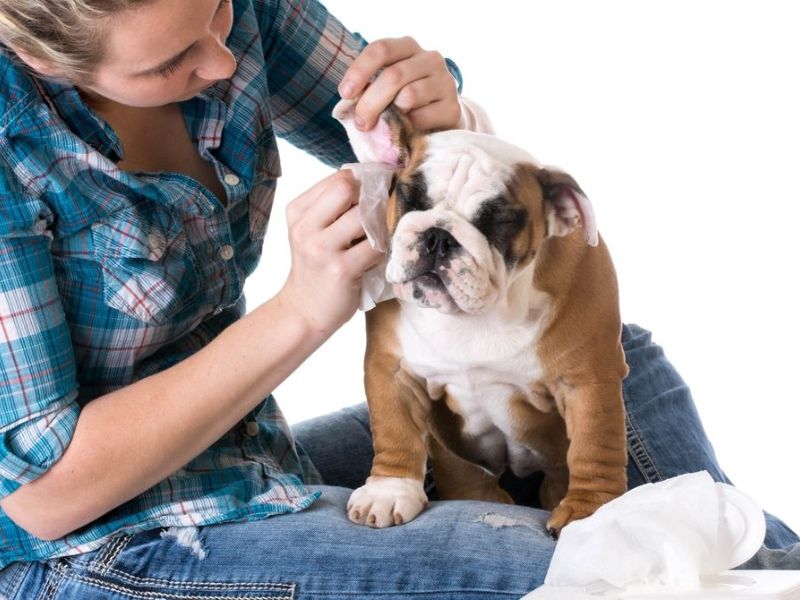
Food or moisture can get caught in the creases on a Bulldog’s face and cause discomfort or infection, so keeping its face clean and dry is more crucial than brushing. You can use a cotton ball dipped in peroxide to clear the wrinkles, and cornstarch can be applied subsequently to aid in drying.
Once a month or so, cut the English bulldog breed‘s nails short enough so that his clicking on the floor is no longer audible. Flossing and brushing its teeth once a week or more frequently will reduce the number of times you have to take it to the vet.
>>> Check out these easy steps to easily cut a dog’s nails at home!
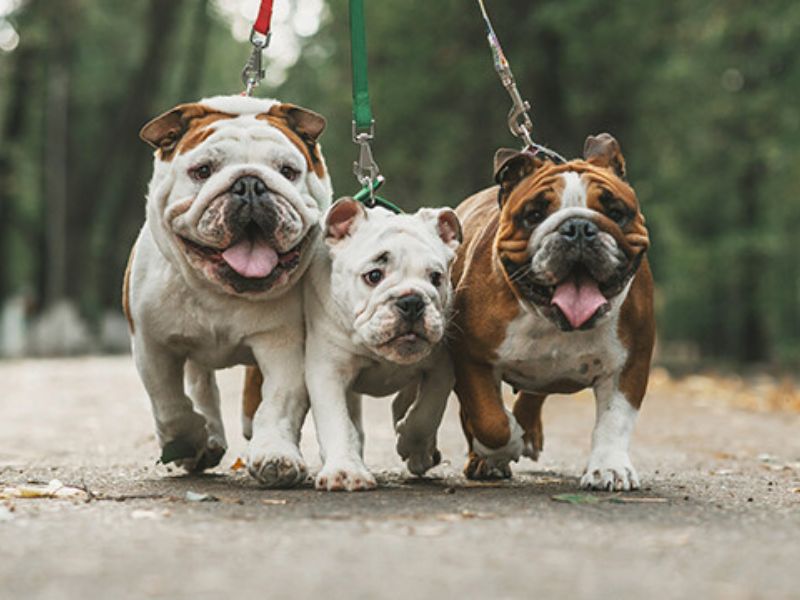
The purebred English bulldog is prone to weight gain, and though it doesn’t enjoy exercise, it still requires it to stay healthy. Regular exercise, even a daily stroll around the block or a few minutes of playtime, will wear it out. Remember that your dog doesn’t effectively shed body heat, so when it gets hot, it begins to breathe loudly or is vulnerable to heat stroke, so make sure it has access to cool air and clean water at all times.
Lastly, the bulldog is not a good swimmer for the same reason. Large, heavy heads that weigh them down to the ground. Keep your Bulldog away from water hazards like a pool, spa, or pond.
>>>Learn more of the best dog care tips to maintain good health for your pup!
2.3. Training
How do you properly train a Bulldog? Patience… and delicious snacks, of course! When it comes to obeying their masters, bulldogs aren’t into it. However, early socialization is essential for the dog’s well-being and is recommended for all breeds. So letting your dog enroll in puppy training programs is a great idea to learn tricks on command. It’s essential to discuss when it’s okay to introduce your Bulldog puppy to other dogs with your vet.

You may teach your British bulldog to sit, come, stay, and go potty outside—all vital safety commands. Remember to reward your Bulldog with positive reinforcement (treats, cuddles, and unique toys) when it listens to you. The best way for him to learn is to have fun training sessions to repeatedly practice his learning and get positive reinforcement, like treats and compliments.
Nothing should be done in a forceful, repetitious, or heavy-handed manner around bulldogs; otherwise, they may become aggressive. Training sessions should be short so that participants can give the information their full attention and learn from it.
>>>You can learn more essential dog training tips for your dog at home!
2.4. Nutrition
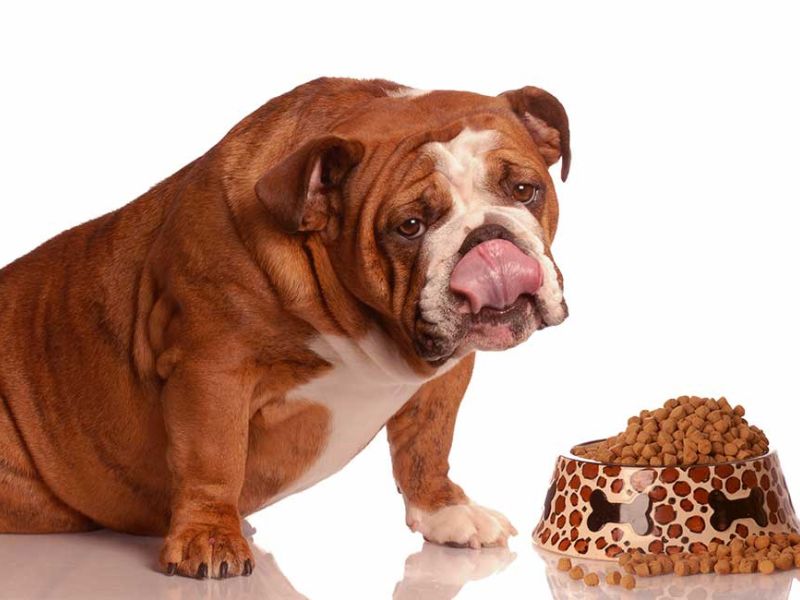
The amount of food your purebred English bulldog needs depends on age, size, build, metabolism, and degree of activity. So on average, a cup to two cups of high-quality dog food should be fed to your dog twice daily. It’s rather apparent that a hyperactive dog will require more than a less active dog. It also matters how good the dog food is; the better the food, the less you’ll need to shake into your dog’s bowl, and the more nutrients it will provide.
Something to keep in mind if you don’t want to overfeed your Bulldog:
- Overfeeding your dog will cause unnecessary strain on its joints, so give it measured portions of food twice a day rather than free access to food.
- Give him the hands-on test if you’re doubtful about his weight.
- Tip to check: Spread your fingers and place them flat on its back, thumbs along its spine. Without undue force, you should be able to feel its ribs but not see them. You should give your dog less food and more exercise if you can’t.
- A high-quality commercial dog food is usually sufficient for a bulldog’s nutritional needs. Food should be chosen in consultation with AAFCO.
- Find out what kinds of human foods can be fed to your dog and what kinds can’t.
Lastly, discussing your bulldog’s weight and food routine with your vet is essential. Consult your veterinarian for advice on what food is best for your dog.
2.5. Ideal Living Environment
The most pleasant and secure place for this breed to live is one with air conditioning because of its breathing difficulties. So the ideal climate for a bulldog is one with mild winters and warm summers.

While some dogs need a yard to run around in, English bulldogs are perfectly content living in an apartment. An average quantity of activity is usually sufficient for these dogs, as they have poor stamina. They do best in milder settings, as extremes of heat or cold can cause them to overheat and struggle to breathe.
Bulldogs, by nature, are laid-back pets who would rather not venture outside. So they are friendly and sociable dogs who thrive in households with plenty of people, especially young children, and infants. Moreover, they are patient with kids and don’t mind the constant noise, so they ignore the problem instead of showing outrage.
3. Adopting An English Dulldog
Adoption fees for rescue Bulldogs vary depending on the dog’s age, health, and special needs, so the costs might range from $600 to $1200. Adoption fees are used to pay for the medical care of the numerous rescued Bulldogs we take in each year.
The AKC lists prices for show-grade puppies as being between $2,500 and $5,000. The English Bulldog Club of America puts the price of a purebred English bulldog for breeding between $1,00 and $3,000 and the price of a pet between $800 and $1,500. A good puppy will set you back around $1,500 on average.
So finding local rescue groups is as easy as doing an online search. A good friend like an English Bulldog will make you laugh and keep you on your toes. Whether you’re adopting or purchasing a puppy, you’ll need to make room in your life and your house for a dog with a lot of energy and character.
>>>Get inspiration to choose the perfect country dog names if you’re going to adopt a new pup!
4. Other Fun Facts
- Bulldog “Boston Beans” belonged to President Calvin Coolidge, a White House resident, and the rest of the family’s pets. Old Boy was the bulldog that lived with President Warren G. Harding.
- As the first American university, Yale chose a bulldog named Handsome Dan as its mascot. Dozens of schools nationwide have adopted the bulldog as their official mascot.
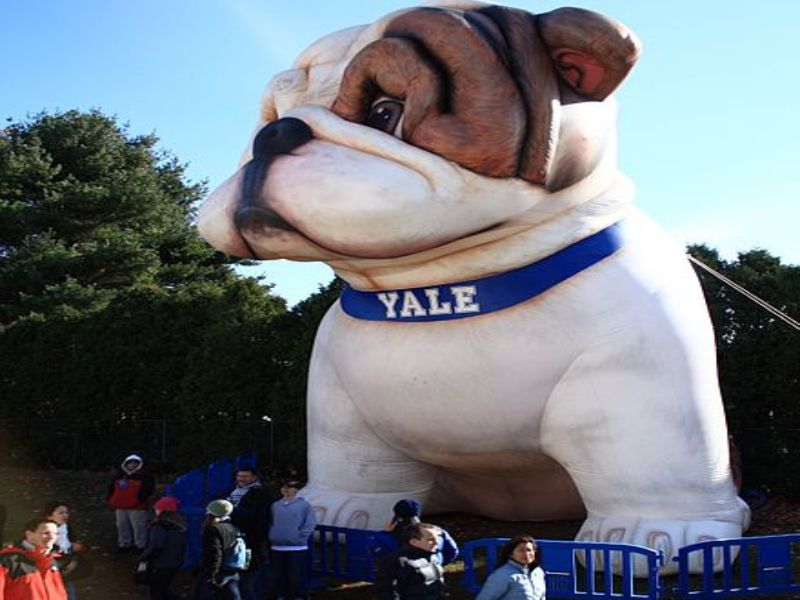
- In 2015, a British bulldog, Otto from Lima, Peru, broke a Guinness World Record for “the longest human tunnel traversed by a dog skateboarder.”
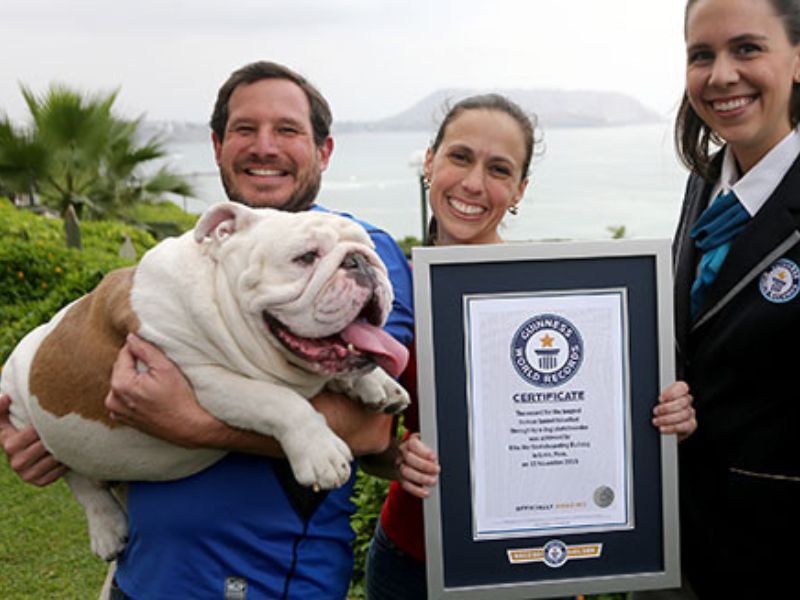
- The Olde English Bulldogge is the rarest variety of bulldogs; it is a huge, powerful cross of English bulldogs, pit bull terriers, American bulldogs, and bullmastiffs.
>> Further reading:
- All Chihuahua Dog Breed Information & Fun Facts To Take Care
- The Ultimate Guide to Dachshund Dog Breed: From Traits, Care and Training Tips
- The Essential Guide To Care For The Golden Retriever Dog
- Top 14 Types Of Doodle Dog Breed: The Ultimate Guide
The English bulldog breed, originally from Great Britain, is known as the “British Bulldog, ” a huge, goofy, and loving guy. The Bulldog epitomizes the phrase “man’s best friend” because of its friendly demeanor, cuteness, and warmth. Moreover, as pets, they’ve evolved into kid-friendly gentle giants. Check out more articles from Canvas Personalized to explore more about classic dog breeds.


